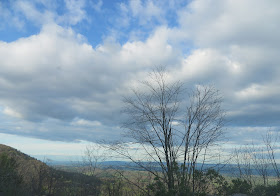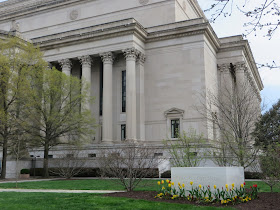The president of the South Fork Hunting and Fishing Club near Johnstown, Pennsylvania was Col. Elias J. Unger who lived in this house and took care of the property. He and his team tried frantically to build and hold the dam as the water crept higher and higher, but to no avail and the dam gave way flooding villages and killing thousands of people downstream
Does this picture remind you of Auntie Em's house in The Wizard of Oz? Would that the Johnstown Flood was a mere dream likeThe Wizard of Oz!/Photo by Patricia Leslie
It was rich vs. poor in Pennsylvania in the 1880s when wealthy industrialists fled Pittsburgh and its high summertime temperatures to Lake Conemaugh 67 miles east. At the lake and the surrounding community, the visitors enjoyed cooler weather and the luxuries of a manmade lake with fishing, boating, and nearby lodging in "cottages" or a clubhouse.
They were members of the South Fork Hunting and Fishing Club which owned the dam which broke on May 31, 1889 flooding four villages before engulfing Johnstown and killing 2,209 people, many never identified, many, Welsh and German immigrants who worked in the city's steel mills.
The dam needed repairs but who had the money? Or wanted to spend it on a dam structure?
Improvements were ignored, and so on a day which saw six to ten inches of rain fall, the most ever recorded for that time period, according to the U.S. Army Signal Corps, the water from Lake Conemaugh breeched the dam and sped down the valley at 40 mph before destroying Johnstown 14 miles away.
Today marks the 131st anniversary of the Johnstown Flood.
Many residents never received warning. The lake's owners and the failed maintenance were never found guilty of anything.
The site lies about four hours from Washington, D.C., now a national park, where I was driven by a book, The Johnstown Flood (1968) by David McCullough which makes visiting the scene much more rewarding if you read it ahead of time. (Johnstown is also about 30 minutes from the September 11, 2001 Flight 93 crash site.) Although the visitor center is still closed at Johnstown for covid-19, the grounds are open and well worth a visit for the love of history and learning about another chapter in our nation's past.
An engraving from Harper's Weekly June 15, 1889 depicting the tragedy at Johnstown/Wikimedia Commons
The entrance to the park with a path on the left leading to the north fork overlook of the dam's remains, now overgrown/Photo by Patricia Leslie
A view from the north fork overlook trail up the hill at the former location of Lake Conemaugh on the far right, Col. Unger's home, center, and his barn, now the Visitor Center, on the left/Photo by Patricia Leslie
Col. Unger's home with Highway 219 in the distance, near the dam's former site in the center/Photo by Patricia Leslie
The Visitor Center on top of the hill, formerly Col. Unger's barn/Photo by Patricia Leslie
A view from the north fork overlook and the water's path/Photo by Patricia Leslie
A trail to the north fork overlook/Photo by Patricia Leslie
Across Lake Conemaugh in Saint Michael's is the South Fork Hunting and Fishing Clubhouse at 186 Main Street. The three-story building had.47 rooms and lodged club members and their families who did not own "cottages." Now, you can drive up, park onsite, and peer in the windows of the clubhouse where repairs are underway/Photo by Patricia Leslie
From the porch of the South Fork Hunting and Fishing Clubhouse/Photo by Patricia Leslie
One of the "cottages" in Saint Michael's which belonged to a member of the South Fork Hunting and Fishing Club, now under renovation. The sign says this style of house is :Victorian Queen Anne "shingle."/Photo by Patricia Leslie
Another view of the "cottage" undergoing renovation, formerly owned by a member of the South Fork Hunting and Fishing Club/Photo by Patricia Leslie
A restored "cottage" in Saint Michael's, privately owned/Photo by Patricia Leslie
Looter then, looters now. Francis Schell and Thomas Hogan made this wood engraving of the flood's aftermath including looters, pictured in Harper's Weekly, June 15, 1889/Wikimedia Commons
What: Johnstown Flood National Memorial.
When: The park's grounds are open from sunrise to sunset, but covid-19 has closed the Visitor Center. If summertime hours resume (June - September) and the visitor center opens, reservations presumably may be made to take a ranger-led hike (of four-five or eight miles) or a four-hour van tour which includes access to the South Fork Hunting and Fishing Club and a ride by "cottages" owned by club members (which may be done in your own vehicle).
Reservations for the tours are important but I found neither their cost nor how to make them on the NPS website.
Nine of the 16 original "cottages" are still standing; three are owned by the National Park Service and six are private.
Where: Johnstown Flood National Memorial, 733 Lake Road
South Fork, PA 15956
Cell phone tour: Available at no charge
How much: No charge to visit the park
For more information: (814) 886-6170 and visit the website
patricialesli@gmail.com















































